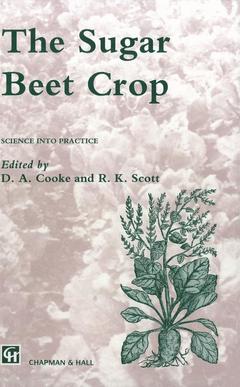Description
The Sugar Beet Crop, Softcover reprint of the original 1st ed. 1993
World Crop Series
Authors: Cooke D.A., Scott J.E.
Language: English
Subjects for The Sugar Beet Crop:
Keywords
agriculture; food; genetics; growth; nutrition; physiology; plant; processing; quality; soil; water
Approximative price 158.24 €
In Print (Delivery period: 15 days).
Add to cart
Publication date: 09-2011
704 p. · 15.5x23.5 cm · Paperback
704 p. · 15.5x23.5 cm · Paperback
Description
/li>Contents
/li>
D.A. Cooke and R.K. Scott Sugar beet is one of just two crops (the other being sugar cane) which constitute the only important sources of sucrose - a product with sweeten ing and preserving properties that make it a major component of, or additive to, a vast range of foods, beverages and pharmaceuticals. Sugar, as sucrose is almost invariably called, has been a valued compo nent of the human diet for thousands of years. For the great majority of that time the only source of pure sucrose was the sugar-cane plant, varieties of which are all species or hybrids within the genus Saccharum. The sugar-cane crop was, and is, restricted to tropical and subtropical regions, and until the eighteenth century the sugar produced from it was available in Europe only to the privileged few. However, the expansion of cane production, particularly in the Caribbean area, in the late seventeenth and the eighteenth centuries, and the new sugar-beet crop in Europe in the nineteenth century, meant that sugar became available to an increasing proportion of the world's population.
History of the crop. Biology and physiology of the sugar beet plant. Breeding and genetics. Seed production and quality. Soil management and crop establishment. Agronomy and crop physiology. Nutrition. Water use and irrigation. ExpeRhizomania. Other diseases. Pests. Opportunities for growth regulators. Weeds and weed control. Storage. Root quality and processing. Economics. By-products.
© 2024 LAVOISIER S.A.S.




